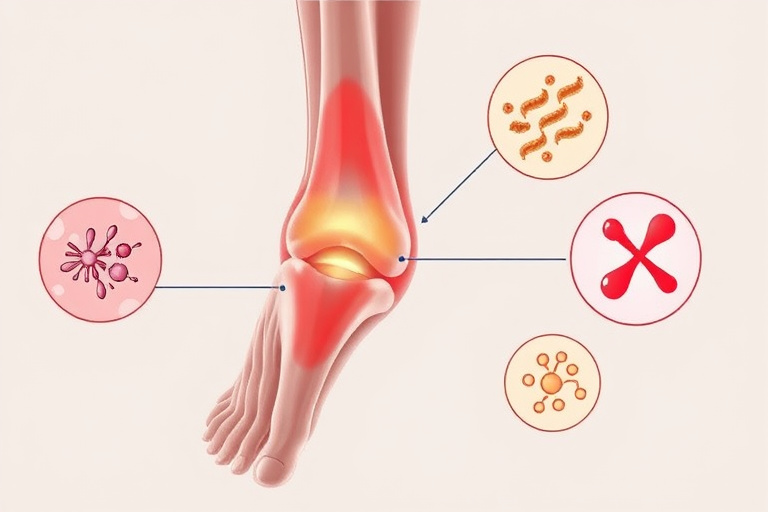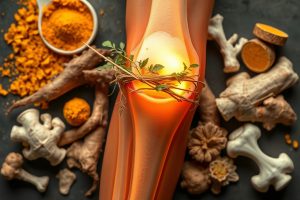Introduction
Joint inflammation is a common clinical concern that can significantly impact mobility and quality of life. It manifests as swelling, pain, stiffness, and sometimes warmth in the affected joint, and understanding its underlying causes is crucial for effective management. Among various types, “pure” joint inflammation—where the inflammation is confined solely to the joint without systemic involvement—holds particular importance in diagnosis and treatment planning. Recognizing the nuances of pure joint inflammation helps clinicians distinguish it from other joint disorders, ensuring patients receive targeted care. In this article, we will explore what constitutes pure joint inflammation, its common causes, how to differentiate it from other conditions, diagnostic strategies, and implications for treatment and prognosis.
What Is Pure Joint Inflammation? A Clear Explanation
“Pure” joint inflammation refers to inflammation localized exclusively within a joint, without accompanying systemic symptoms or widespread autoimmune activity. Unlike secondary joint inflammation, which may result from systemic autoimmune diseases such as rheumatoid arthritis or lupus, pure joint inflammation is confined to the joint itself. Clinically, it presents as isolated joint swelling, pain, and limited movement, often with rapid onset. Identifying pure joint inflammation is vital in differential diagnosis because it guides clinicians toward specific causes and appropriate interventions, avoiding unnecessary treatments aimed at systemic diseases.
Common Causes of Pure Joint Inflammation
Localized Autoimmune Processes
In some cases, autoimmune mechanisms target only a specific joint, leading to localized autoimmune joint disease. This can occur without systemic autoimmune features, presenting as isolated joint inflammation. Such cases require careful evaluation to distinguish them from other causes.
Degenerative Joint Conditions (Osteoarthritis)
Osteoarthritis, a degenerative joint disease, can cause localized joint inflammation due to cartilage breakdown and bone changes. The inflammation is typically mild and confined to the affected joint, often worsening with activity and improving with rest.
Infectious Causes (Septic Arthritis)
Septic arthritis occurs when an infection—bacterial, viral, or fungal—invades a joint space. When the infection is confined to the joint without systemic spread, it presents as pure joint inflammation. Septic arthritis is a medical emergency requiring prompt diagnosis and treatment.
Crystal-Induced Arthropathies (Gout and Pseudogout)
Gout and pseudogout are crystal-induced arthropathies characterized by the deposition of uric acid or calcium pyrophosphate crystals, respectively. These deposits trigger intense inflammation within the joint, often without systemic symptoms, making them classic causes of pure joint inflammation.
Differentiating Pure Joint Inflammation from Other Joint Disorders
Distinguishing Features of Pure Joint Inflammation
Pure joint inflammation typically presents with sudden onset, localized swelling, warmth, and pain. The duration can vary, but systemic symptoms like fever or malaise are usually absent unless infection is involved. The pattern of symptoms, along with physical examination, helps differentiate it from other conditions.
Key Differences from Systemic Diseases
Systemic autoimmune diseases such as rheumatoid arthritis or lupus often involve multiple joints and systemic symptoms like fatigue, fever, or skin rashes. In contrast, pure joint inflammation remains confined to a single joint or a limited number of joints without systemic manifestations.
Identifying Infections vs. Non-Infectious Inflammation
Signs pointing toward septic arthritis include rapid joint swelling, severe pain, fever, and inability to move the joint. Laboratory tests such as joint aspiration for culture are essential for confirmation. Differentiating infectious from non-infectious causes is critical for appropriate treatment.
Role of Laboratory Tests and Imaging
Imaging modalities like X-ray, ultrasound, and MRI help assess joint integrity and inflammation patterns. Laboratory tests, including blood markers like ESR and CRP, along with synovial fluid analysis, provide valuable information for diagnosis.
Diagnostic Strategies for Confirming Pure Joint Inflammation
Laboratory Analysis
Synovial fluid analysis is central to diagnosis. It involves examining the fluid’s cell count, identifying crystals, and performing cultures to detect infections. Blood tests measuring ESR, CRP, rheumatoid factor, and uric acid levels further aid in pinpointing the cause.
Imaging Techniques
X-ray, ultrasound, and MRI scans help visualize joint structures, detect erosions, and assess inflammation extent. These imaging tools are instrumental in differentiating between causes of joint inflammation and evaluating joint damage.
Importance of Clinical History and Physical Examination
A thorough history focusing on symptom onset, duration, activity levels, and systemic symptoms, combined with a detailed physical exam, guides clinicians toward accurate diagnosis and appropriate testing.
Implications for Treatment and Prognosis
Treatment Approaches for Pure Joint Inflammation
Management typically involves anti-inflammatory medications such as NSAIDs, lifestyle modifications, and addressing underlying causes—like uric acid reduction in gout or antibiotics in septic arthritis. Targeted therapies depend on the specific diagnosis.
Potential for Complete Resolution
When inflammation is isolated and correctly diagnosed, there is a good prognosis for complete resolution. Early intervention can prevent joint damage and preserve function.
When to Seek Specialist Care
Red flags such as persistent symptoms, suspicion of infection, or signs of systemic autoimmune disease warrant consultation with specialists like rheumatologists, infectious disease experts, or orthopedists. For example, if you want to understand more about the underlying mechanisms of joint issues, exploring Joint Genesis can provide valuable insights.
Addressing Common Concerns and Preventing Misdiagnosis
Avoiding Overdiagnosis or Underdiagnosis
Comprehensive evaluation, including appropriate testing and imaging, is essential to avoid misdiagnosis. Accurate identification of the cause of joint inflammation ensures effective treatment and prevents unnecessary interventions.
The Role of Specialist Consultation
When in doubt, consulting specialists ensures precise diagnosis and tailored treatment plans, especially in complex cases or when systemic disease or infection is suspected.
Final Thoughts: The Key Takeaways on Pure Joint Inflammation
Understanding the causes and distinguishing features of pure joint inflammation is vital for effective management. Accurate diagnosis allows for targeted treatment, improving outcomes and preventing joint damage. If you experience persistent joint symptoms, seeking timely medical evaluation is crucial to determine whether your condition is a case of localized joint inflammation or something requiring more specialized care.




